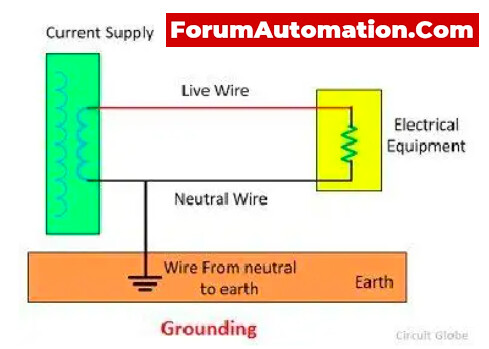The word “earthing” and “grounding” are sometimes used interchangeably; nevertheless, depending on the context, there can be some subtle differences between the two.

In a general sense, both ideas involve connecting electrical systems to the ground in order to achieve certain functional and safety goals. Nevertheless, depending on the context, each one may take on a completely different meaning.
Earthing
- Earthing is basically the process of connecting electrical systems or equipment to the surface of the Earth itself.
- Earthing also means to be creating a low-resistance conduit for electrical current to flow into the ground is the goal of this process, which is often accomplished by the use of conductive materials such as copper rods, plates, or grounding electrodes.
- The primary goal of earthing is to safeguard people and equipment from electrical shocks by preventing the development of potentially harmful voltages and providing a secure path for fault currents to dissipate into the earth.
Grounding
- The term “grounding” refers to a more general idea that encompasses a wider range of systems, including both electrical and non-electrical ones. Grounding is the process of connecting a specific component or an entire system to a common reference point in electrical systems. This point is referred to as the “ground.”
- The Earth serves as this reference point the majority of the time; however, it might also be a metal conductor or a grounding grid. By decreasing the potential for electrical noise, interference, and voltage fluctuations, grounding helps to produce a stable reference potential and contributes to correct operation.
- It is essential to ensure the integrity of signal transmission, the protection of equipment, and the discharge of static electricity.
In conclusion, earthing is primarily linked with electrical safety, preventing shocks and fault currents, whereas grounding has a larger scope that incorporates both electrical and non-electrical systems, involving reference potential and functionality. In addition, earthing is primarily associated with electrical safety, preventing shocks and fault currents.